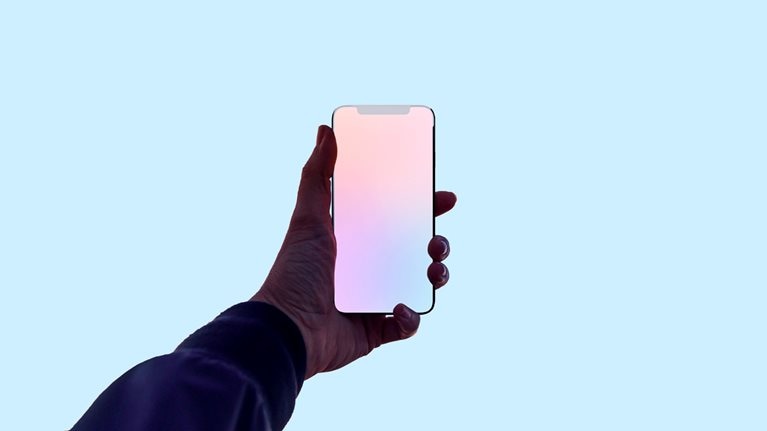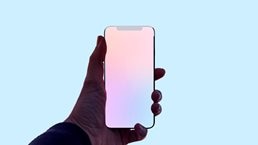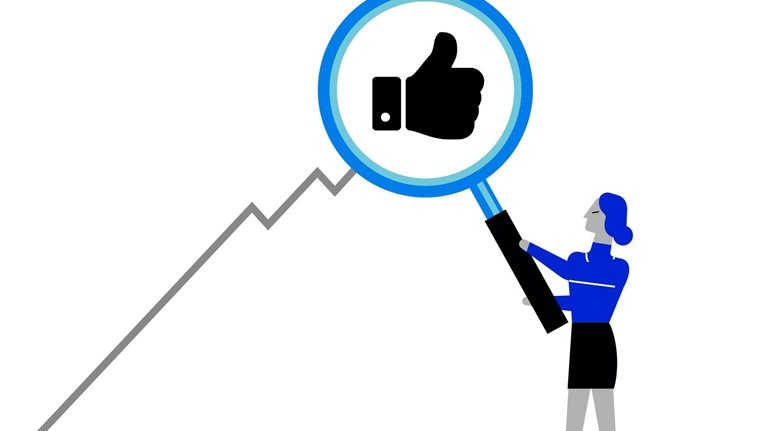
Sphere of influence. Once it was Mary Kay cosmetics and coiffed ladies driving pink Cadillacs. Now it’s waist trainers, hair growth gummy vitamins, and green protein powder supplements. The most glamorous and charismatic among us have always influenced how others aspire to live—including the products people buy to support their lifestyle dreams. But only recently, with the advent of social media, has influencing people become an actual job.
Influencer marketing is a collaboration between popular social-media users and brands to promote brands’ products or services. These partnerships have been going on informally since the dawn of social media. By 2009, they were sufficiently commonplace for the US Federal Trade Commission to step in and regulate them through the so-called Mommy Blogger law. (China, India, and the United Kingdom have introduced similar regulations.)
Since then, the market has grown astonishingly quickly: since 2019, it has more than doubled on the strength of platforms such as Instagram and YouTube (in Western countries) and Pinduoduo and WeChat (in China). In 2023, the influencer marketing economy was valued at $21.1 billion.
McKinsey anticipated the rise of influencer marketing in 2014 with the completion of a survey involving 20,000 European consumers. The analysis at the time noted that most of influencer marketing’s impact came from so-called power influencers. But the survey also identified an emerging—and largely untapped—market of less active influencers with smaller followings. In recent years, we’ve seen this phenomenon play out with the rise of micro- and nano influencers.
Brands tap into influencer marketing because it works for them, consumers, and influencers alike. Social media already had a significant impact on consumer purchase decisions when McKinsey carried out its 2014 survey. In 2022, an analysis of more than 2,000 influencer marketing posts found that the strategy does yield a positive ROI for brands.
Plus, there’s no shortage of would-be influencers. In a 2019 survey of several thousand millennials and Gen Zers, 54 percent said they would become influencers if they could. Although we don’t know how long the market will be this hot, social media continues to be very popular. And brands and individuals are making the most of this gold rush while business is still booming.
Beyond shiny hair and a megawatt smile, what makes someone an influencer? And how does influencer marketing work? Read on to learn more about this rapidly growing phenomenon and where it’s headed.
Learn more about McKinsey’s Growth, Marketing & Sales Practice.

Looking for direct answers to other complex questions?
What is an influencer?
Influencers are people with sizable social-media followings who can influence their followers’ behavior as consumers. Although anyone can be an influencer, the internet—like the world more broadly—tends to favor the rich, the famous, and the glamorous. Check out this 2021 list of the world’s top 50 social-media influencers. Recognize any names? You probably do: most of the people on the list are huge celebrities.
However, not all social-media accounts represent humans, and the same is true for influencers. Animal influencers are a thing as well. So are AI influencers. The most famous robot influencer is the permanently 19-year-old Lil Miquela, whose account (created by a start-up in Los Angeles) has a following that’s three million strong.
What does an influencer marketing deal look like?
Such a partnership often combines these two models:
- An influencer is paid a flat rate per post to feature a product or service. This is known as a brand deal. The flat rates can be three to five figures, even for an influencer without millions of followers or a global profile. Celebrities can charge six figures or more per post.
- An influencer posts about a product or service, with a link to a purchase gateway. Every time a viewer buys the product by clicking through the link or using a promo code, the influencer earns an affiliate commission.
Learn more about McKinsey’s Growth, Marketing & Sales Practice.
How much are influencers paid?
Because each influencer has a unique audience, a unique follower list, and unique engagement metrics, each influencer marketing deal is also unique. Swimsuit model and influencer Alexa Collins, who has more than two million followers, told Insider that she charges at least $1,000 for a sponsored story on her Instagram account. Tyler Chanel—a micro sustainability influencer with more than 13,000 followers—says that she charges brands at least $100 for a sponsored story. Some social-media influencers regard $100 per 10,000 followers as an acceptable formula. But there are no hard-and-fast rules. One social-media influencer talked with Insider about pulling in about $5,000 each month just through affiliate links, which traffic web users to an advertiser’s website. Brand deals can bring big paychecks for influencers, too. Another influencer, who had 275,000 followers at the time, said that she made $700,000 in six months just from brand deals.
What’s the difference between influencer marketing and celebrity endorsements?
Brands have used celebrities to sell products since long before athletes first appeared on cereal boxes. But influencer marketing and celebrity endorsements are not quite the same thing. Celebrity endorsements typically involve a company making a huge investment in someone, but it’s hard to specify the exact return on that investment. With influencer marketing, it’s easier to figure out the ROI because companies can closely monitor likes, shares, online conversations, and so forth.
Learn more about McKinsey’s Growth, Marketing & Sales Practice.
What’s a micro influencer?
Influencers come in five different sizes—nano, micro, medium, macro, and mega—depending on how many followers they have:
- Nano influencers have fewer than 10,000 followers.
- Micro influencers have from 10,000 to 50,000.
- Medium influencers have from 50,000 to 100,000.
- Macro influencers have more than 500,000.
- Mega influencers breathe rarified air: they have over one million followers.
You might assume that brands want to work only with macro influencers, but that’s not always the smartest business decision. Micro influencers might produce more relatable content than their macro counterparts, who use professional photographers, stylists, makeup artists, and all kinds of consultants to put a post together. While macro influencers may advertise a lifestyle that seems unattainable to many people, micro influencers, on the other hand, can represent accessibility to their followers.
Of course, there are obvious benefits to working with macro influencers: with their mass followings, they can help brands reach hundreds of thousands or even millions of people.
What platforms are most popular for influencer marketing?
In a 2022 survey of more than 2,000 global brands, about 80 percent reported using Instagram for influencer marketing. TikTok is gaining steam: in the same study, conducted in 2023, 56 percent of participating brands reported using that platform for influencer marketing campaigns.
Although Instagram and TikTok are the most popular platforms for influencer marketing, brands shouldn’t ignore the potential of the alternatives. Maybe your brand already has in mind a specific influencer with an impressive number of YouTube subscribers. Like more traditional forms of marketing, influencer marketing should be tailored to a brand’s specific audience.
Also, research conducted by the influencer marketing platform Upfluence shows that certain platforms might attract specific influencers, depending on how many followers the influencer has. Micro and medium influencers tend to prefer Instagram, for example, while macro and mega influencers migrate toward TikTok.
What makes a successful influencer marketing campaign?
Authenticity is the basis of any successful influencer marketing campaign. Forming relationships with influencers who are already relevant to a brand’s message is vital. Influencers might be popular for their content on sustainability, cooking, body positivity, healthy lifestyle, and so on. Does your brand fit in well with a particular influencer and that influencer’s brand? Influencer marketing should be about more than scoring posts endorsing your products; it should be about building real relationships with creators—you want them truly behind your brand.
What’s more, partnering with a diverse group of influencers can help your brand engage with larger audiences. For example, Alessandra Sales—the vice president of growth at Ipsy—told McKinsey that her experiences working with transgender creators helped her redefining-beauty brand connect with the transgender community.
Learn more about McKinsey’s Growth, Marketing & Sales Practice.
How has the pandemic changed influencer marketing?
The evidence clearly shows that the COVID-19 pandemic has created a new normal. Although many of us are traveling again, going out more, and maybe even venturing into the office, things probably will never be quite the same. The pandemic has changed the way we view public health, food, shopping, and much besides.
More people are shopping digitally now. No surprises there: with lingering health concerns and new, lower risk tolerance levels, it’s easier and safer to buy those new shoes from your couch. In one study, conducted in May 2020, Visa data showed that 13 million people in Latin America made their first-ever e-commerce transaction during the pandemic, when consumers wanted contactless forms of shopping. In addition, McKinsey’s ongoing global survey shows that consumers are consistently opting for digital, reduced-contact ways of receiving services or products. Influencers have an ever-larger role to play in the new shopping normal: 34 percent of survey participants said that they have shopped on Instagram because of influencer endorsements.
How will the metaverse affect influencer marketing?
The metaverse is a relatively new, somewhat complicated concept. We characterize it as an evolution of the internet: it is the emerging 3-D digital space that allows people to have lifelike experiences online via virtual reality and other technologies. In the metaverse, people interact with peers, content, cryptocurrency, brands, and other “worlds.” The platforms you might already know include Animal Crossing, Fortnite, Minecraft, Roblox, and The Sims.
What’s the future of marketing in the metaverse? It turns out that people are willing to pay for virtual goods: direct-to-avatar sales of such items have created a $54 billion industry. Gucci, for instance, sold a digital version of its Dionysus bag for over $4,000—significantly more than the price of the real-life one. Nike has been selling virtual sneakers called Nike Cryptokicks, and Chipotle offered vouchers for real-life burritos to the first 30,000 visitors to the company’s virtual restaurant on Roblox.
Influencers are getting more and more involved with the metaverse. The rapper Snoop Dogg, for example, has released a music video created in The Sandbox metaverse, as well as a “Snoopverse” (on the same platform), where fans can access exclusive performances and content. The potential for brand–influencer collaboration in the metaverse appears as limitless as the metaverse itself.
Learn more about McKinsey’s Growth, Marketing & Sales Practice.
What are the opportunities and challenges of influencer marketing?
Many brands can benefit by partnering with influencers. But influencer marketing isn’t without risk. Large, well-known companies might use influencer marketing to establish or maintain a sense of trust among consumers by adding an element of personability. But big brands can also find it harder to appear authentic in an influencer recommendation because it was clearly paid for. An influencer touting a smaller, lesser-known brand can seem more genuine.
Smaller brands may face their own challenges in the future. As influencer marketing overwhelms the online market, it may be harder to stand out amid the noise. Katie Freiberg, former head of growth marketing at the lingerie company ThirdLove, told McKinsey:
As the market becomes more saturated, it’s much harder for brands, especially smaller brands, to differentiate themselves. Direct-to-consumer [D2C] brands have used this as a way to really build their brands and their voices. As bigger companies come into the space and start using influencers, D2C brands are going to be forced to figure out the next new thing.
Freiberg also points out that big businesses working with many influencers can have difficulty managing such networks. Even if your brand carefully chooses a creator who upholds your brand’s values, you can’t always be sure that person will act professionally online and not harm your brand’s reputation.
As always, brands must be smart about how they conduct business on the internet or in the metaverse. But despite the risks, partnering with the right influencers in these spaces can help brands grow exponentially.
Click here to learn more about McKinsey’s Growth, Marketing & Sales Practice—and check out influencer-marketing-related job opportunities if you’re interested in working at McKinsey.
Articles referenced include:
- “When will the COVID-19 pandemic end?,” July 28, 2022, Sarun Charumilind, Matt Craven, Jessica Lamb, Adam Sabow, Shubham Singhal, and Matt Wilson
- “Marketing in the metaverse: An opportunity for innovation and experimentation,” McKinsey Quarterly, May 24, 2022, Eric Hazan, Greg Kelly, Hamza Khan, Dennis Spillecke, and Lareina Yee
- “How US consumers are feeling, shopping, and spending—and what it means for companies,” May 4, 2022, Kari Alldredge, Tamara Charm, Eric Falardeau, and Kelsey Robinson
- “How European shoppers will buy groceries in the next normal,” December 2, 2020, Gizem Günday, Stijn Kooij, Jessica Moulton, Marek Karabon, and Jorge Omeñaca
- “Reimagining marketing in the next normal,” July 19, 2020, Arun Arora, Peter Dahlström, Eric Hazan, Hamza Khan, and Rock Khanna
- “Discussions in digital: Influencer marketing is ready for its close-up,” April 15, 2020, Dianne Esber and Jane Wong
- “Getting a sharper picture of social media’s influence,” McKinsey Quarterly, July 1, 2015, Jacques Bughin



